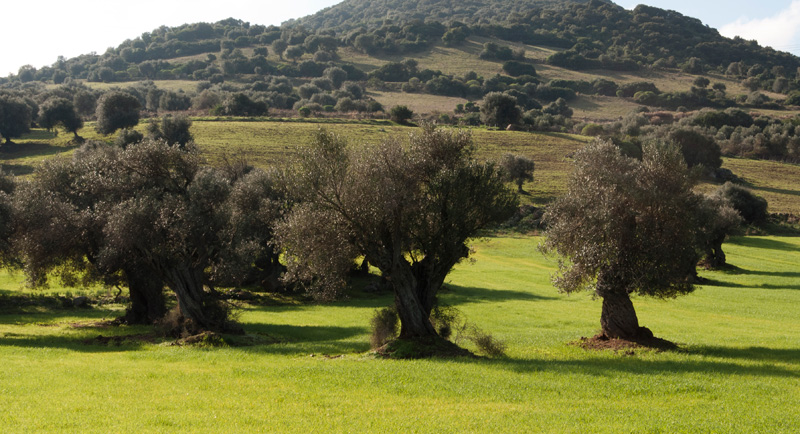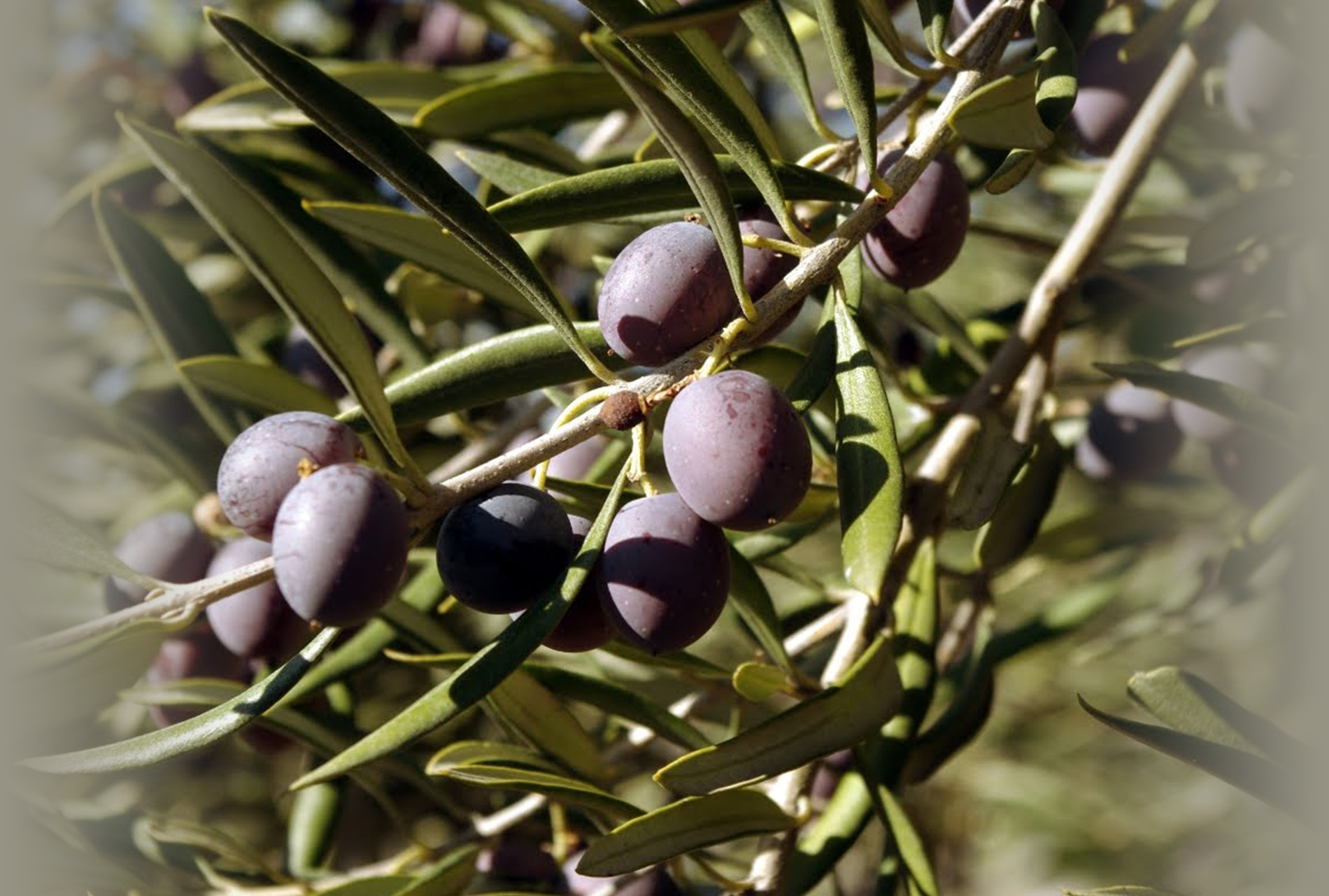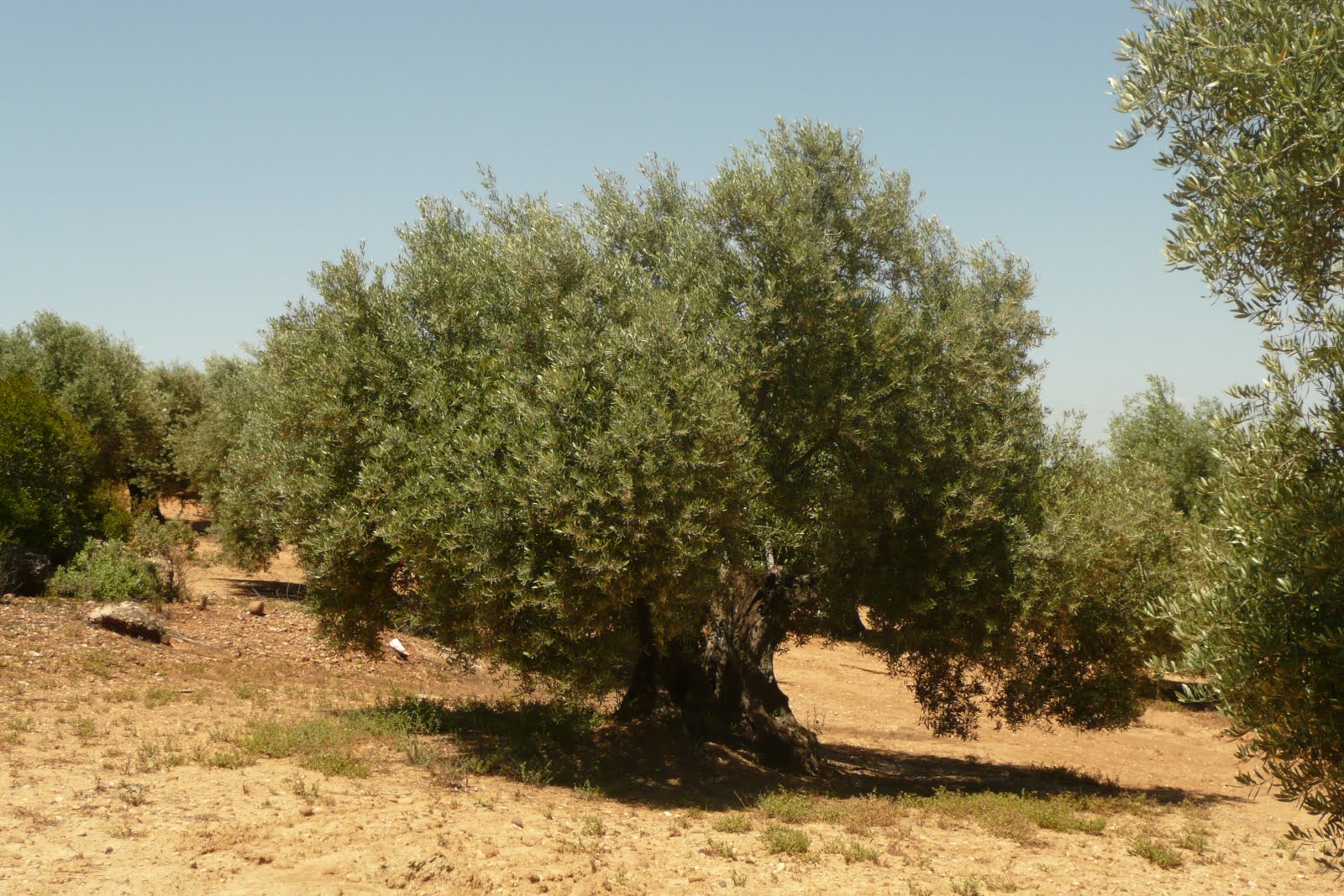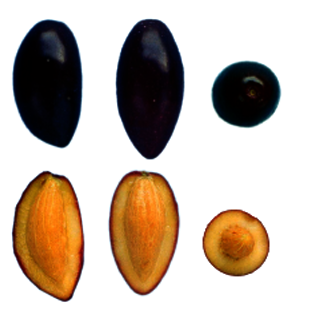Varieties
Olive tree cultivation originated in the Middle East more than 5,000 years ago and spread to the West throughout the Mediterranean area. From the wild olive trees that grew spontaneously, the first cultivators of the Iberian Peninsula began to choose those that had the best characteristics depending on the areas, productivity, adaptation to the soils, yield, etc... The olive trees in the Iberian peninsula are now, therefore, hardy trees that can withstand diverse climatic and orographic conditions and grow alongside other autochthonous plants, such as vines, almond trees or fig trees.

There are a surprising diversity of climates and microclimates in Spain resulting from its complex orography, as well as a great variety and richness of soils. These geographic conditions, together with the large number of olive varieties used in making our olive oils, mean that Spain can offer a wide range of aromas and flavours that are unrivalled by any other producing country. Oils with a very sweet and mild flavour can be found alongside others with great body and character, with a pleasant bitter or peppery flavour of different intensities. Spanish oils generally have an intense fruity aroma that reminds us of a green or ripe olives.
In Spain alone there are 260 olive tree cultivars. By way of example, the characteristics of some of the main varieties are described below:
PICUAL
- General data and areas
 This is the most important variety in the world, representing 50% of Spain's olives and trees and, therefore, approximately 20% world-wide. Its geographic location is clearly linked to Andalusia, the main producing region in the world, and specifically to the provinces of Jaen, Cordoba and Granada. This cultivar is given different names depending on the producing area, but its main name, Picual (from the Spanish root "pico", meaning "peak"), comes from the shape of the drupe, as it is like a swollen teat ending in a point.
This is the most important variety in the world, representing 50% of Spain's olives and trees and, therefore, approximately 20% world-wide. Its geographic location is clearly linked to Andalusia, the main producing region in the world, and specifically to the provinces of Jaen, Cordoba and Granada. This cultivar is given different names depending on the producing area, but its main name, Picual (from the Spanish root "pico", meaning "peak"), comes from the shape of the drupe, as it is like a swollen teat ending in a point. - The tree
 It is very vigorous with rather short spreading branches and it tends to sprout superfluous shoots. Its crowns are vigorous with a tendency to close in on themselves. The foliage develops well and the young wood is greenish-grey. It starts to produce early and is highly productive, which is one of the reasons why plantations of this olive tree have increased so much. It is a type of tree that adapts to different climatic and soil conditions and can tolerate frosts, although it is not very resistant to droughts and very limy soils.
It is very vigorous with rather short spreading branches and it tends to sprout superfluous shoots. Its crowns are vigorous with a tendency to close in on themselves. The foliage develops well and the young wood is greenish-grey. It starts to produce early and is highly productive, which is one of the reasons why plantations of this olive tree have increased so much. It is a type of tree that adapts to different climatic and soil conditions and can tolerate frosts, although it is not very resistant to droughts and very limy soils. - The leaf
It is rather elongated and wider in the upper half.
- The drupe
It is generally medium-sized to thick and weighs about 3.2 grams. The flesh-to-pit ratio is about 5.6. It ripens between the second week of November and the third week of December. The oil yield is very good and can sometimes be up to 27%.
- The oil
From a physical-chemical point of view, it is excellent due to its fatty acid composition and the number of natural antioxidants it contains. Its high content of monounsaturated oleic acid, important to avoid cardiovascular diseases, and its low content of linoleic acid (an essential acid for the human diet, but if there are excessive quantities, the oil starts to oxidise and free radicals, which are harmful for certain organs in the human body, are formed) as well as its high content of polyphenols, make it the most stable oil in the world, with a long shelf life and it performs excellently when heated for cooking.
From an organoleptic point of view, we have to differentiate between the plains and the mountains, as their organoleptic profiles are very different. Oils from the plains have great body, are normally bitter, with a certain flavour of wood. Oils from the mountains are usually sweeter, although they have a "fresh" and pleasant flavour.
CORNICABRA
- General data and areas
 His cultivar is the second in importance in the number of cultivated hectares, but the third in production. It originated in Mora de Toledo, and its cultivation area covers the provinces of Toledo and Ciudad Real in the Community of Castilla la Mancha. Its name ("one-horned goat") comes from the characteristic horn-shape of its fruit.
His cultivar is the second in importance in the number of cultivated hectares, but the third in production. It originated in Mora de Toledo, and its cultivation area covers the provinces of Toledo and Ciudad Real in the Community of Castilla la Mancha. Its name ("one-horned goat") comes from the characteristic horn-shape of its fruit. - The tree
The Cornicabra olive is an old cultivar and is most likely a varietal population (family), with a large number of local ecotypes perfectly adapted to their area. This variety has average vigour, with medium-length branches, not very many shoots and the young wood is light grey with ochre tones.
- The leaf
It is long and symmetrical, light green on the top side and greenish-grey on the back.
- The drupe
 The olive is elongated and rather bent, asymmetrical, plump and flat at the back, with a horn-shaped belly. It is of average size and weight (about 3 grams), but has a high oil yield, about 19% and a high flesh-to-pit ratio (5). The drupe ripens late, usually starting in the last week of October and finishing in the first week of January. As it is strongly resistant to being picked, mechanised harvesting is difficult.
The olive is elongated and rather bent, asymmetrical, plump and flat at the back, with a horn-shaped belly. It is of average size and weight (about 3 grams), but has a high oil yield, about 19% and a high flesh-to-pit ratio (5). The drupe ripens late, usually starting in the last week of October and finishing in the first week of January. As it is strongly resistant to being picked, mechanised harvesting is difficult. - The oil
It is golden yellow with touches of light green indicating its fruitiness. When it is obtained from riper olives, at the end of the harvest, there are normally different flavours and textures that remind us of exotic fruit, like avocados. Cornicabra oils are fruity and have a noticeable balance between sweet at first, the bitterness of green leaves and a medium-intense peppery flavour. Their texture is smooth and velvety. They are stable oils because of their high content in monounsaturated fatty acids. The balanced composition of essential fatty acids, high content in oleic acid and minor components, which produce excellent aromas and flavours, make it especially appropriate for dietary purposes.
HOJIBLANCA
- General data and areas
 The name (from the Spanish for "hoja", leaf, and "blanca", white) comes from the colour of the leaf's back side, making the tree look bright, and, from a distance, silver. It is found in Andalusia, to be precise in the east of the province of Seville, the south of Cordoba and all of the north of the province of Malaga. It accounts for about 16% of the Andalusian olive groves. It is used both for black Californian style table olives, due to the firm texture of its flesh, and for oil production.
The name (from the Spanish for "hoja", leaf, and "blanca", white) comes from the colour of the leaf's back side, making the tree look bright, and, from a distance, silver. It is found in Andalusia, to be precise in the east of the province of Seville, the south of Cordoba and all of the north of the province of Malaga. It accounts for about 16% of the Andalusian olive groves. It is used both for black Californian style table olives, due to the firm texture of its flesh, and for oil production. - The tree
Its vigour is average to good, with long branches that bear a lot of fruit, although they tend to droop. The crowns have an average density and a regular foliage cover, and the trees are characterised by the light greenish-grey colour of their young wood. They can withstand cold weather well, and adapt to limy soils perfectly.
- The leaf
It is partially fluted and elongated, although it is rather wide and the back side is silver.
- The drupe
 Although the size fluctuates a great deal, the drupe is normally large to thick and weighs 4.3 grams on average. It is an almost perfect sphere with a high flesh-to-pit ratio, about 8. The drupe can also withstand cold weather well. It flowers in the first two weeks of May, with most blossoms at the beginning of the second week. It ripens quite late, between the end of November and the end of December, and once it is ripe it resists being picked, so harvesting is somewhat difficult. Its oil yield is low, with an average between 17-19%.
Although the size fluctuates a great deal, the drupe is normally large to thick and weighs 4.3 grams on average. It is an almost perfect sphere with a high flesh-to-pit ratio, about 8. The drupe can also withstand cold weather well. It flowers in the first two weeks of May, with most blossoms at the beginning of the second week. It ripens quite late, between the end of November and the end of December, and once it is ripe it resists being picked, so harvesting is somewhat difficult. Its oil yield is low, with an average between 17-19%. - The oil
From a physical-chemical point of view, it has a very balanced composition of fatty acids, with saturated acids that are relatively lower than in the rest of the oils of other varieties. Its composition is ideal for dietary purposes. As its stability is not very high and it oxidises easily, this oil should be kept out of the light and stored without excessive oxygenation.
From an organoleptic point of view, it has an enormous range of flavours, but the most common are sweet at the beginning of the tasting, with a fresh grassy fruity aroma, a slightly bitter flavour of green fruit and other fruits that sometimes recall a fruit cocktail, slightly peppery in the throat and a final almondy aftertaste.
ARBEQUINA
- General data and areas
This is one of the best known Spanish cultivars. Although it has been planted in the provinces of Saragossa and Huesca in the community of Aragon, it originated in the locality of Arbeca (Lerida), where the name comes from, and it is widespread in the provinces of Tarragona and Lerida, both in the community of Catalonia. The quality of the oil has led these two producing areas to being recognised with two Designations of Origin: Siurana and Les Garrigues respectively. The tree is found in olive groves or mixed with other crops, mainly vines, and sometimes grows on the edges of plots.
- The tree
The plant, which is not very vigorous, can be used in intensive plantations. Its long shoots, non-spreading branches and the dark green colour of the young wood, make this olive tree look like a broomstick. The olive orchards of the arbequina cultivar give the landscape a very strange appearance and are very different from those seen in Andalusia, for example. This variety has an average flowering period in the first fortnight of May.
- The leaf
It is fluted with not very thick edges, becoming wider at the tip. It is an ochre-green colour on the top side and greenish-grey-yellow on the back.
- The drupe
It is short, oval and almost symmetrical, with a low flesh-to-pit ratio of 4.6, and as it is small, weighing about 1.9 grams, mechanical harvesting is difficult. However, it is a greatly appreciated cultivar as it starts producing early, with an average ripening period between the second week of December and the second week of January. It is highly productive and has a good oil yield, about 20.5%, which makes it one of the varieties with the highest oil extraction percentage.
- The oil
These oils have an exquisite flavour with traces of tomatoes and vegetable gardens, and the aroma reminds us of fresh artichokes. They are also fruity with a certain exotic aroma. A fresh apple smell, accompanied by a certain mildness and sweetness, identifies the oils, with a final aftertaste of green almonds. They are also very fresh and young oils which, because of their composition, are a little more delicate than other varieties as far as oxidation is concerned, which is why they must be kept in the dark at a low temperature to guarantee protecting them for a longer period of time. These oils have been appreciated for their quality for centuries, even though their production usually fluctuates greatly due to climatic conditions. Virgin olive oils of the arbequina cultivar are dense and pour well and vary greatly from one area to another, as well as within the same area, in successive years. When harvesting is started, the olives are very green and this characteristic is reflected in the organoleptic properties of the oils. The olives are not normally left to become completely ripe. To describe the average characteristics of these oils, we could say that they are fruity, slightly green and more or less bitter, peppery and sweet. They are, therefore, very balanced oils, with greener flavours (leaf), bitter and peppery at the beginning of the harvesting season, and sweeter at the end. We should also mention the almondy (green almond) aroma and flavour and the way they pour smoothly, which is a very pleasant sensation when tasting them.
LECHIN OF SEVILLE
- General data and areas
This variety is distributed throughout the provinces of Seville, Cordoba, Cadiz, Malaga and Huelva. Its name (from the Spanish root "leche" meaning "milk") comes from the whitish colour of its pulp and its oily liquid (a mixture of vegetable water and oil).
- The tree
It is characterised by being very vigorous with large roots, an open appearance and a thick, dense crown. It is a rustic tree and tolerates cold weather, droughts and limy or bad quality soils. Although it is productive, its flowering period is average and there are a number of faults in the harvest due to blossom deterioration. Harvesting is expensive as the drupe is large and resists picking.
- The leaf
It is small, flat, short and a little wider in the middle. The top side is a bright yellowish-green and the back is grey-green
- The drupe
The average olive weighs almost 3 grams and is ellipsoidal, a little convex at the back and slightly asymmetrical. The end is rounded and sometimes has a small teat. It is black when ripe. The oil content is medium to low, about 18%, and it has a high flesh-to-pit ratio of about 7.2 to 8.5. It ripens early.
- The oil
From a physical-chemical point of view, its composition makes it rather unstable as far as oxidation is concerned, and it loses its organoleptic properties relatively quickly.
From an organoleptic point of view, it is a balanced smooth-pouring oil, with an average, grassy aroma of olives. The flavour is bitter with an average peak intensity and leaves a green almond aftertaste in the mouth. It is very pleasant when recently produced.
VERDIAL
The name verdial covers a series of local varieties spread throughout the South and the South-west of the peninsula. It has different names depending on its geographic origin.
I. VERDIAL OF BADAJOZ
- General data and areas
It is found throughout the province of Badajoz, in the community of Extremadura, to the borders with Portugal.
- The tree
As it is resistant to droughts, it is used as the root stock of other cultivars. It blossoms in the first fortnight of May.
- The drupe
It is very large and has an average weight of 5.7 grams, and is appreciated for its dual purposes: for oil (it has a high oil yield of almost 22%, because of its high flesh-to-pit ratio of about 7.2), and for table olives (it is large and easy to pickle). It ripens between the last third of November and almost the end of the year. Mechanical harvesting is difficult as it ripens late and is highly resistant to being picked.
II. VERDIAL OF VELEZ-MALAGA
- General data and areas
This is a typical variety of the Axarquía region, in the South-east of the province of Malaga.
- The drupe
It is larger than the other varieties that are processed to obtain oil, although it does not have a very high oil yield.
- The oil
The oils are fruity with a very sweet and pleasant flavour and do not taste bitter or peppery at all. Due to its composition, it has to be protected from heat, light and air to be best preserved. The virgin oil of this verdial cultivar is processed separately in Malaga, although it is also normally mixed with oils from the hojiblanca variety resulting in a perfect organoleptic blend with average stability.
EMPELTRE
- General data and areas
The empeltre variety is characteristic of the community of Aragon, originating in the locality of Pedrola (in the province of Saragossa). It is cultivated in an area that extends from the provinces of Logroño and Teruel through the Ebro Valley to the province of Tarragona, and can even be found on the Balearic Islands.
- The tree
It is very vigorous, with upright branches and crowns that tend to be vertical. It ripens in the first third of May.
- The leaf
It is wider in the upper half. The top side is dark green and the back is silver scored by a green, prominent nerve.
- The drupe
The olive is elongated, asymmetrical and slightly plump at the back. It has an average volume (2.7 grams) with a flesh-to-pit ratio of 5.3 and an acceptable oil yield of 18.3%. It ripens early, between the first week of November and the first week of December. As it is not resistant to being picked, and its branches are upright, it is ideal for mechanical harvesting. However, there may be fruit setting problems and damage due to winter frosts. It is a variety greatly appreciated for its productivity and the excellent quality of its oil.
- The oil
The oils are a pale yellow colour in the majority of the cases, which is not due to harvesting when the olives are overripe. The oils have a mild fruity aroma and are very pleasant and very sweet tasting. They are never bitter or peppery and usually leave an aftertaste of almonds. As it is mild, it is ideal for blending.
PICUDO
- General data and areas
The olive is called picudo (which means "prominent peak") because of the shape of the drupe with a pointed and curved end and a noticeable teat. It has many other names, but the one it is given in Luque, a town in the south-east of Cordoba, where it is called "pajarero" (bird trapper) is curious. According to legend, because the oil is so sweet, when it is ripe, the birds peck at the fruit. This cultivar is widespread in the provinces of Cordoba, Granada, Malaga and Jaen, with the most plantations in the area of the Designation of Origin Baena, in the south-east of Cordoba.
- The tree
It is very vigorous and has an open appearance and a thick, dense crown. It takes root easily and adapts well to limy soils and prefers an excess of humidity to droughts. It can withstand cold weather and is considered a rustic tree.
- The leaf
It is large, long and wide. The top side is very dark green. You can tell this tree from a distance as it looks darker than the rest.
- The drupe
The drupe is black when ripe and it is characterised by being the second largest of those that are used to obtain oil. Its average weight is about 4.8 grams. The fruit-to-pit ratio is high, about 6.3. It ripens between the fourth week of November and the end of December and the oil yield is good, but not as good as the picual, with figures of around 20%. It is an excellent choice for table olives, both green and Californian style.
- The oil
Its composition of fatty acids is almost the same as the lechin cultivar. As far as oxidation is concerned, the oils are included in the delicate range. Its organoleptic characteristics are very good, with unbeatable balance and sweetness, with no hard flavours and they pour very smoothly and are light, sometimes reminding us slightly of exotic fruits, apples and almonds.
